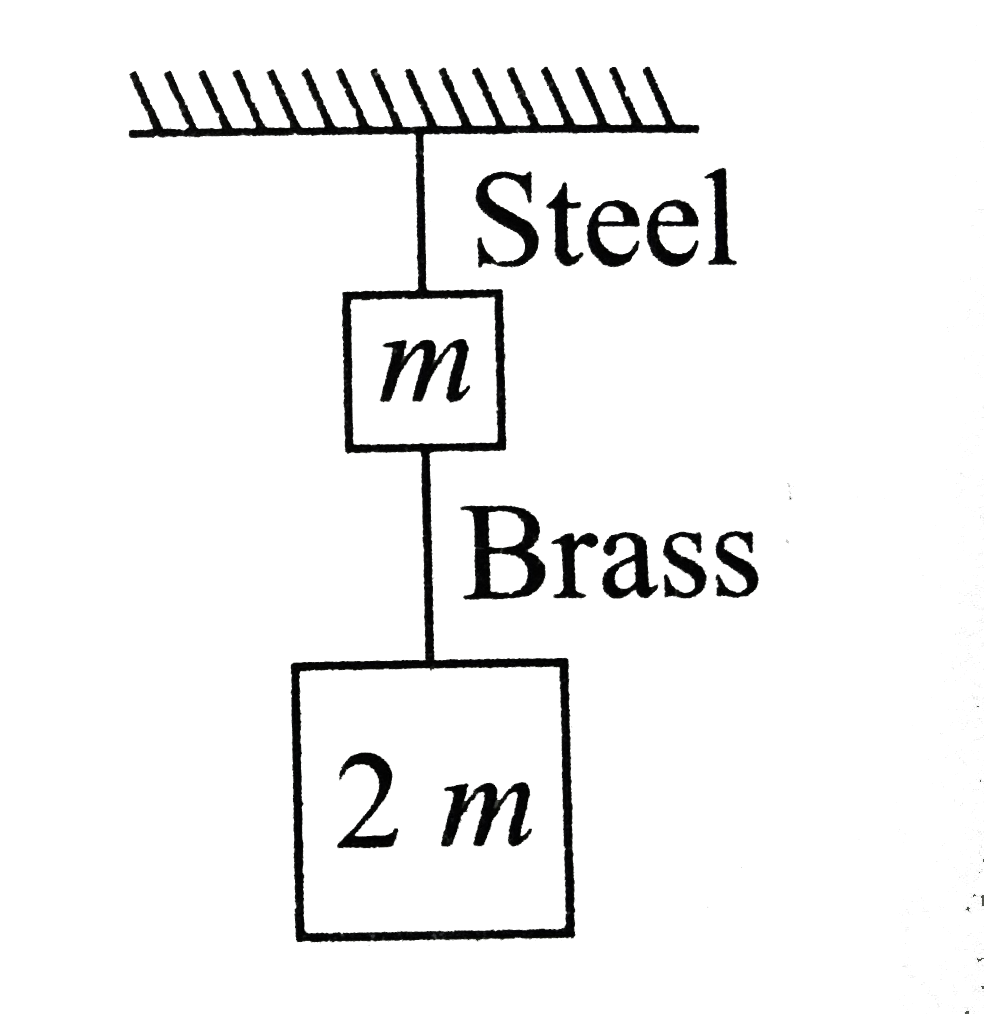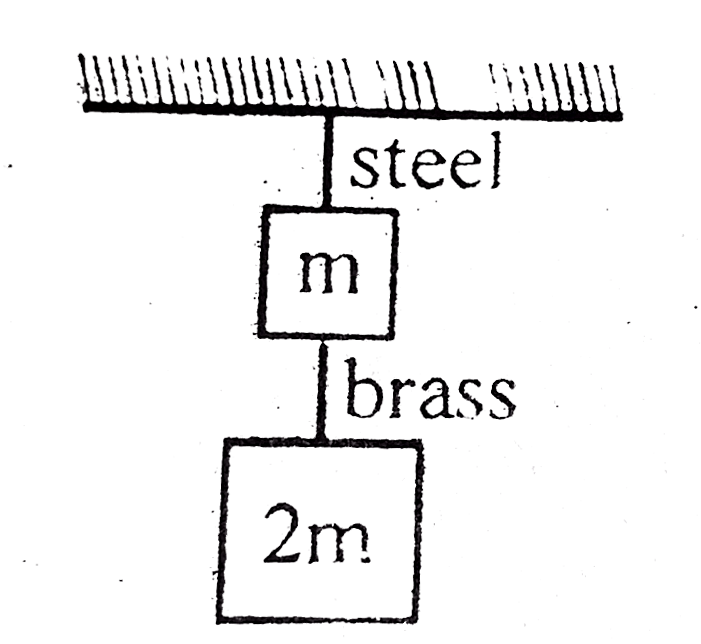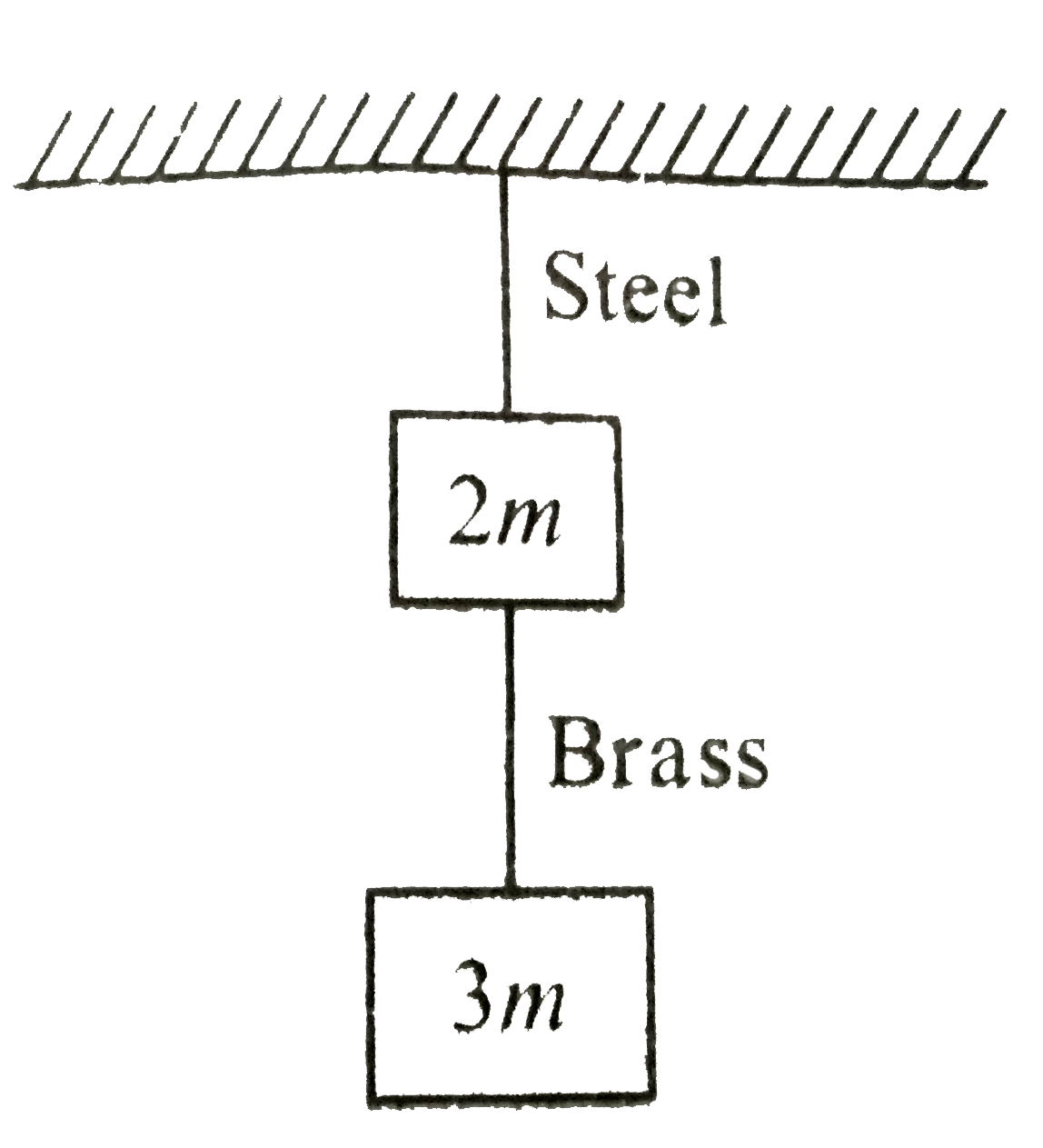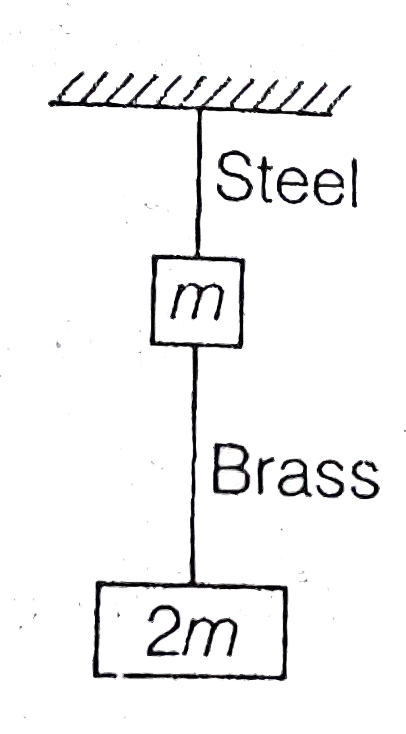the ratio of lengths, area of cross section and young's modulii of steel to that of brass wires shown in the figure are a,b,c respectively. The ratio of increase in the lengths of brass to that of steel wires is [Assume that the masses of steel and Brass wires are negligible

(4a/7bc)
(7bc/4a)
(4bc/7a)
(7a/4bc)
The correct Answer is:C
Answer(3) ΔLBΔLS=FBFS×LBLS×ASAB×YSYB
= 47×1a×bc .
∴ΔLBΔLS=4bc7a.
Topper's Solved these Questions
- EAMCET QUESTION PAPER 2017BOOK - SIA PUBLICATIONCHAPTER - EAMCET QUESTION PAPER 2017EXERCISE - CHEMISTRY
6 Videos
- EAMCET QUESTION PAPER 2017BOOK - SIA PUBLICATIONCHAPTER - EAMCET QUESTION PAPER 2017EXERCISE - CHEMISTRY
6 Videos
- EAMCET -2016 (TS)BOOK - SIA PUBLICATIONCHAPTER - EAMCET -2016 (TS)EXERCISE - CHEMISTRY
36 Videos
- EAMCET-2019 (TS) SHIFT-1BOOK - SIA PUBLICATIONCHAPTER - EAMCET-2019 (TS) SHIFT-1EXERCISE - CHEMISTRY
10 Videos
Similar Questions
If the ratio of lengths, radii and Young's moduli of steel and brass wires in the figure are a,b and c respectively then the corresponding ratio of increase in their lengths is

View SolutionIf the ratio of lengths, radii and Young's moduli of steel and brass wires in the figure are a,b and c respectively then the corresponding ratio of increase in their lengths is

View Solution
Knowledge Check
If the ratio of lengths, radii and Young's moduli of steel and brass wires in the figure are a,b and c respectively then the corresponding ratio of increase in their lengths is
 A2a2cbB3a2b2cC2acb2D3c2ab2
A2a2cbB3a2b2cC2acb2D3c2ab2If the ratio of lengths, radii and Young's moduli of steel and brass wires in the figure are a,b and c repectively then the corresponding ratio of increase in their lengths is
 A2a2c/bB3a/2b2cC2ac/b2D3c/2ab2
A2a2c/bB3a/2b2cC2ac/b2D3c/2ab2If the ratio of diameters,lengths and Young's moduli of steel and brass wires shown in the figure are p, q and r respectively . Then the corresponding ratio of increase in their lenghts would be
 A3q5p2rB5q3p2rC3q5prD5q3pr
A3q5p2rB5q3p2rC3q5prD5q3pr
If the ratio of lengths, radii and Young's moduli of steel and brass wires in the figure are a,b and c respectively then the corresponding ratio of increase in their lengths is

View SolutionIf the ratio of lengths, radii and young's modulii of steel and brass wires in the figure are a,b and c, respectively. Then, the corresponding ratio of increase in their lengths would be

View SolutionIf the ratio of diameter, lengths and Young's moduli of steel and brass wires shown in figure are 2 : 1, 2 : 1 and 2 : 1 respectively, then the corresponding ratio of increase in their lengths would be

View SolutionIf the ratio of diameter, lengths and Young's modulus of steel and brass wires shown in figure are 2 : 1, 2 : 1 and 2 : 1 respectively, then the corresponding ratio of increase in their lengths would be

View SolutionIf the ratio of diameters,lengths and Young's moduli of steel and brass wires shown in the figure are p, q and r respectively . Then the corresponding ratio of increase in their lenghts would be

View Solution
